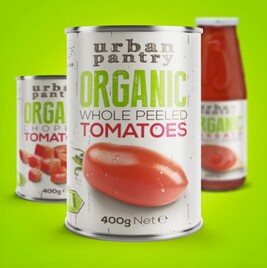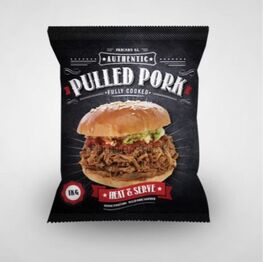3 CRUCIAL QUESTIONS
There are three questions you must have the answer to before you start designing the packaging for a product:
1. What is the product?
Not a trick question; this should be an easy one. What are you selling? How big is it? What materials is it made of? Is it delicate?
This question is going to help you determine if there are any logistical musts for your product packaging. For example, a delicate product will require more secure packaging. Something that is large or with odd dimensions, on the other hand, may require a custom packaging solution instead of an out-of-the-box box.
2. Who’s buying the product?
Is the product supposed to be used by men, women or both? Is it for children or adults? Is it geared towards people who are environmentally conscious? To those on a budget or with lots of disposable income?
A product’s packaging should appeal to its ideal consumer; it’s important to know who that consumer is before you start the design process. Products for older adults may need larger text. Alternatively, items geared towards an affluent customer will need to consider materials that create a feeling of luxury.
3. How are people buying the product?
Are they purchasing it in a supermarket? A small boutique? Online?
You’re going to want to think about packaging differently if the product is going to be sold online and shipped than if it’s going to need to stand out from the competition on a big-box store shelf. Items that will be sold online probably shouldn’t have a lot of extra space that could cause the product to rattle around, or the package to bend. And those that will be on a boutique shelf will need to catch the eye of a buyer surrounded by cutesy items in cutesy packages.
There are three questions you must have the answer to before you start designing the packaging for a product:
- What is the product?
- Who’s buying the product?
- How are people buying the product?
1. What is the product?
Not a trick question; this should be an easy one. What are you selling? How big is it? What materials is it made of? Is it delicate?
This question is going to help you determine if there are any logistical musts for your product packaging. For example, a delicate product will require more secure packaging. Something that is large or with odd dimensions, on the other hand, may require a custom packaging solution instead of an out-of-the-box box.
2. Who’s buying the product?
Is the product supposed to be used by men, women or both? Is it for children or adults? Is it geared towards people who are environmentally conscious? To those on a budget or with lots of disposable income?
A product’s packaging should appeal to its ideal consumer; it’s important to know who that consumer is before you start the design process. Products for older adults may need larger text. Alternatively, items geared towards an affluent customer will need to consider materials that create a feeling of luxury.
3. How are people buying the product?
Are they purchasing it in a supermarket? A small boutique? Online?
You’re going to want to think about packaging differently if the product is going to be sold online and shipped than if it’s going to need to stand out from the competition on a big-box store shelf. Items that will be sold online probably shouldn’t have a lot of extra space that could cause the product to rattle around, or the package to bend. And those that will be on a boutique shelf will need to catch the eye of a buyer surrounded by cutesy items in cutesy packages.
HIERARCHY OF INFORMATION
Think back to those 3 questions, specifically who’s buying your product and where are they finding it. You’re going to use that to create the information architecture for your package.
You may have beautiful photos of your product in action, a brilliant testimonial from a customer, a witty tagline that explains how you’re awesome, and a great graphic showing customers how to use your product. But when a shopper looks at your packaging they’re probably only going to remember one thing. What do you want that to be?
Pick the one absolute most important thing you want customers to know about your product. That should be the centerpiece of your design.
You can then add 2-3 things you want to show once they’ve picked up your product (or clicked on your link) that will close the deal. Let’s look at an examples:
Think back to those 3 questions, specifically who’s buying your product and where are they finding it. You’re going to use that to create the information architecture for your package.
You may have beautiful photos of your product in action, a brilliant testimonial from a customer, a witty tagline that explains how you’re awesome, and a great graphic showing customers how to use your product. But when a shopper looks at your packaging they’re probably only going to remember one thing. What do you want that to be?
Pick the one absolute most important thing you want customers to know about your product. That should be the centerpiece of your design.
You can then add 2-3 things you want to show once they’ve picked up your product (or clicked on your link) that will close the deal. Let’s look at an examples:



